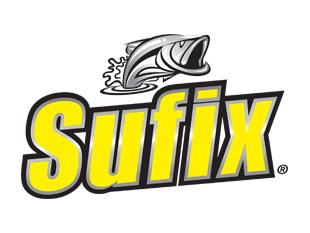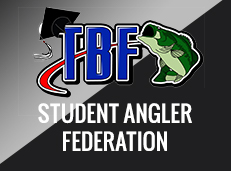The Bass Federation’s 2018 National Championship promises to provide fans and competitors with a three-day blast of nonstop bass action as 108 of the sport’s top anglers battle for grassroots bass fishing’s most coveted crown.

Set for April 9-14 on legendary Bull Shoals Lake out of Flippin, Arkansas, the event features an elite field of 54 boaters and 54 co-anglers, who qualified at 22 district competitions in the TBF’s National Semi-Final system. “Thanks to the success of the new semi-finals program, 2018 championship participants will compete for an all-time record payout of nearly $300,000 in cash and prizes,” TBF president and CEO Robert Cartlidge reports.
“Anglers will practice in their own boats Monday and Tuesday, then transfer their gear to brand-new, Evinrude-powered Ranger boats for the final day of practice,” Cartlidge explains. “Everyone will fish out of these state-of-the-art Rangers on Thursday and Friday, after which the field will be cut to the top boater and co-angler from each of the TBF’s seven divisions for Saturday’s final round.”

The combination of an extremely talented, tournament-tested field competing for such high stakes on one of the nation’s best bass fisheries virtually guarantees the event will be a wild ride for fans and participants alike.
A Storied History
Bull Shoals Lake has been the scene of many epic bass tournament battles since its creation in the early 1950s, and for good reason. The White River impoundment holds impressive numbers of both largemouths and smallmouths, plus beefy spotted bass. It offers anglers nearly 50,000 acres of surface water plus hundreds of miles of shoreline—which is largely undeveloped and dominated by limestone bluffs, shelf rock, rubble and gravel.
Potential bass-holding areas include countless points, coves, ledges, channels and other sweet spots. Though the lake lacks significant submerged weedgrowth, it holds numerous artificial fish habitat structures. High water routinely adds flooded shoreline vegetation to the mix, including button bushes and water willows, and flood stage sees entire forests covered with water.
Past TBF national championships on Bull Shoals have produced exciting action, including heroic rallies and unexpected lead changes. Back in March of 2009, West Virginia Bass Federation member Robert Harkness mounted a relentless comeback to win the championship.
Harkness climbed from 17th place on day one all the way to first on the final day with a 40-pound, 13-ounce three-day total weight.
“I really didn’t think I had a prayer when I went out the last morning,” Harkness admits. “But Bull Shoals is a great lake. You can get five bites and they could all be four or five pounds apiece, so it’s never over until it’s over.”
He caught bass on everything from swimbaits fished over deep timber to grubs and leadheads in much shallower water, but the majority of his fish came on a 110 series Megabass jerkbait in reliable staging areas. “The water temperature was in the fifties and the bass were prespawn,” he says. “I’d reel the bait down six to eight feet over a rock ledge, then retrieve it with jerks and 10-second pauses—most fish hit when the bait was at rest.”
Hard-fishing but ever humble, Harkness is quick to acknowledge that Mother Nature helped fuel his rally. “The leader was catching 18 to 20 keepers a day throwing medium-diving crankbaits off a point where the fish were stacked up,” he says. “He wacked them the first two days. But when a cold front came in for day three and shut everything down, my slow jerkbait retrieve was the key.”
As for the impact of winning the TBF championship and $100,000 Living the Dream package, Harkness says it’s hard to describe. “It was the most exciting moment in my life outside of family milestones like marriage or the births of my children and grandchildren,” he says. “On top of that, fishing the Living the Dream was truly that, a dream. The chance for a weekend angler to fish the Tour against the Larry Nixons of the world was unbelievable; those experiences are some of my favorite memories ever.”
Vermont Bass Federation member Gilbert Gagner also has a history on Bull Shoals. He represented the Green Mountain State on the reservoir during the 2012 TBF championship, held in late March. When changing conditions put his rivals on the ropes, he tweaked his tactics to win the event with a 35-pound, 5-ounce total.
“The lake was up a little but falling fast,” he recalls. “In practice, I struggled to find a population of fish that I could stay on.” Adding to his woes, the bass Gagner did see refused to bite. “I could see lots of fish cruising the shorelines, but they wouldn’t hit. Back at the docks, everyone was talking about seeing but not catching, so it wasn’t just me.”
Gagner admits he fished fast during practice. “I listened to all the dock talk that said you have to throw fast-moving baits,” he admits. “When the tournament started, I left that behind and slowed way down. I spent the first two days of the tournament throwing Senkos weightless and caught two limits of largemouths.”
Gagner’s day one catch went 11 pounds, 2 ounces. The weight was considerably less than the 20-pound, 5-ounce sack weighed by Michigan’s Marc Snyder, but it kept Gagner in the running—as did his 10-pound, 9-ounce limit on day two.
After qualifying for the finals, Gagner shifted his tactics due to fall water levels—and adjustment his competition was unable to pull off. “The top guys were concentrating on flooded bushes,” he says. “The water was dropping astronomically, and by day three they flat-out ran out of bushes to fish. I switched to dragging a tube jig for smallies on gravel and put together a solid limit.”
The catch landed him in a tie with the Arizona Bass Federation’s Jeff Erickson. TBF rules dictated that in a tie, the first tie-breaker is the total number of fish caught. Each angler had 15. The next tie-breaker is the total number of fish weighed alive. All 15 of Gilbert’s fish were weighed alive, while Erickson only weighed 14 of his 15 alive.
“It was overwhelming,” Gagner recalls of the moment the tie-breaker was announced. “And it was actually a life-changing moment.” Due to travel concerns, he opted to fish the Northern Costa FLW Series instead of the FLW Tour for his Living the Dream package. He enjoyed a consistent season, finishing as high as ninth (at the Potomac River event) and ranking fifth in the overall standings.
Gagner also fished the FLW Cup on Lake Lanier, where he pocketed a $10,000 paycheck. “It was humbling,” he recalls. “I finished dead last. But I’ll never forget how FLW pro Scott Martin told me to keep my head up, because the same thing happened to him on Lanier. He told me not to think anything of it and to just keep on fishing.”
Gagner took Martin’s words to heart. He went on to compete in numerous other TBF tournaments, and won the 2015 TBF Championship as a co-angler on Grand Lake, Oklahoma. Though currently sidelined due to an injury, he hopes to get back on the water with his TBF family soon. He also offers words of advice and encouragement for those fishing this year’s championship.
“Bull Shoals fishes very similar to northern fisheries that have a lot of chunk rock and bushes, especially when the water is high,” says. “I fished toward the dam and in midlake areas, concentrating on gravel and flooded bushes along submerged shorelines.
“Conditions could be similar at this year’s championship, and weights could vary hugely depending on whether the females are on the beds,” he continues. “Everyone fishing it needs to be flexible and ready to switch things up when water levels or other conditions change.”
TBF’s 2009 champion Harkness adds the following: “Finding out where the fish are and what stage of the spawn they’re at will be critical,” he says. “Prespawn bass stage close to spawning areas in the back of bays and cuts, so I’d start looking in deep water, 100 to 200 yards off a nice spawning flat.”
Anticipation Builds Among Qualifiers
Kentucky Bass Federation member Steven Taylor can’t wait for the showdown to begin. He punched his golden ticket to compete in the championship at the District 3 National Semi-Finals event on Kentucky Lake, held October 21-22, finishing seventh overall and topping the Bluegrass contingent with eight bass for an 18-7 total.
“My wife says I’m worse than a kid before Christmas,” he laughs. “I’m 58 years old and still get so excited I can’t sleep the night before a tournament. I’m absolutely looking forward to the championship.”
Considering the winnings at stake—including the $100,000 Living the Dream package—such anticipation is understandable. “Winning would be an unbelievable accomplishment,” he says. “I’ve been fishing the Federation since 1992, so I’ve been aspiring to this for a long time.”
Not surprisingly, Taylor has been busy prepping for his shot at the crown. “I never fished Bull Shoals before qualifying, and it’s unlike any lake I’ve fished,” he says. “I’ve been down there three times since the Semi-Finals, and have two more trips planned. Plus, before I went down there, I marked areas I wanted to fish on my electronics, to save time when I arrived at the lake.”
Taylor’s reconnaissance has been enlightening, though he admits packing has been a Herculean effort. “When you come down to prefish a tournament like this, you load everything you own,” he says. “Same thing when you hit the water. My first trip to Bull Shoals, I had 19 rods on the front deck, so I was ready to throw anything. Now I’m down to three with my top presentations.”
Tactically speaking, Taylor expects a variety of baits and techniques to play a role in the championship. “If the water level stays where it is now (5.20 feet below full pool as of press time in early January), jigs and soft plastics will be key,” he says. “But if it goes up into the bushes, it will be a flipping bite.”
After studying past tournament results and fishing Bull Shoals for himself, Taylor has an idea about what kind of weights it will take to do well in the championship. “Normally on this lake, 12 pounds a day will put you in the top four or five, especially in multiple-day tournaments” he says. “And if you can put 15 pounds a day in the livewell, you’ll win it easily.”
Arkansas’ Mike Webster, who qualified for the championship by winning the boater division at the District 6 Semi-Finals event on Lake Dardanelle September 16-17 with a 27.09-pound two-day total, believes even heavier bags may be needed to claim the crown.
“I think we’ll see a lot of 10- and 12-pound bags,” says Webster. “You’ll need 15 to 16 pounds a day if you want to have a shot at winning. Plus, considering the quality of the fishery and the competition, it could take 18 or even 20 pounds a day, whether the bass are locked on the beds or still in prespawn mode, eating to get fat.”
While much of Bull Shoals lies in Webster’s home state, he doesn’t consider it his home water. In fact, it’s worlds apart from his favorite fishery. “I fish Dardanelle the most,” he explains. Dardanelle is a muddy, shallow lake on the Arkansas River. Bull Shoals is deep, clear and there’s no grass. It’s a typical White River fishery, with rocks, bluffs and gravel.”
Webster predicts weather conditions and water levels will dictate where and how the fish are caught. “If we get little or no rain this winter and the water is cold, top tactics could be rattlebaits, crankbaits and spinnerbaits,” he says. “If the water is warm and up, a lot of guys will be catching the in the bushes, whether they’re on beds or not.”
Whatever patterns are in play come tournament time, Webster believes that putting together a milk run of spots capable of producing better than average bass will be key to victory. “There are so many bass in Bull Shoals it’s unreal,” he says. “Catching limits shouldn’t be a problem. Finding the 3- to 5-pound bites is another story. If you can figure out how to get those fish—and find multiple areas that hold them–you’ll be in good shape.”
Like his fellow competitors, Webster says winning the championship and Living the Dream package would be a dream come true. “Getting a chance to fish the FLW Tour would be an awesome deal,” he says. “The TBF championship winner also qualifies to fish the FLW Cup, which is on Lake Ouachita, Arkansas, this summer. I’d love a shot at winning that.”
Catch The Action
Prior to the big event, updates and angler profiles will be posted on the Federation’s Facebook page and bassfederation.com. Longtime TBF sponsor Ranger Boats, based in Flippin, Arkansas, will host the championship, while historic Bull Shoals Lake Boat Dock is the site of launches and weigh-ins all three days. Bass fishing fans are invited to cheer the anglers off in the morning and enjoy the weigh-in action starting at 3 p.m. each day.
If you can’t make it to Bull Shoals, coverage of the TBF National Championship will stream live daily on bassfederation.com and be broadcast nationally on Federation Angler TV, which airs on the Pursuit Channel. For complete listings and showtimes, visit pursuitchannel.com.
The Bass Federation is a proud partner in fishing with FLW, which helps support this annual event along with other industry-leading TBF sponsors including Ranger Boats, Evinrude, Cabela’s, Humminbird, Minn Kota, Berkley, Lowrance and Power Pole.
Sidebar:
Bull Shoals Lake
Facts And Figures
Construction:
finished July 1951
Size:
48,000 acres plus
Depth:
maximum: 210 feet
average: 75 feet
Minimum length requirement:
15 inches
Major forage species:
threadfin shad, sunfish, bluntnose minnows
Major tributary:
White River

























